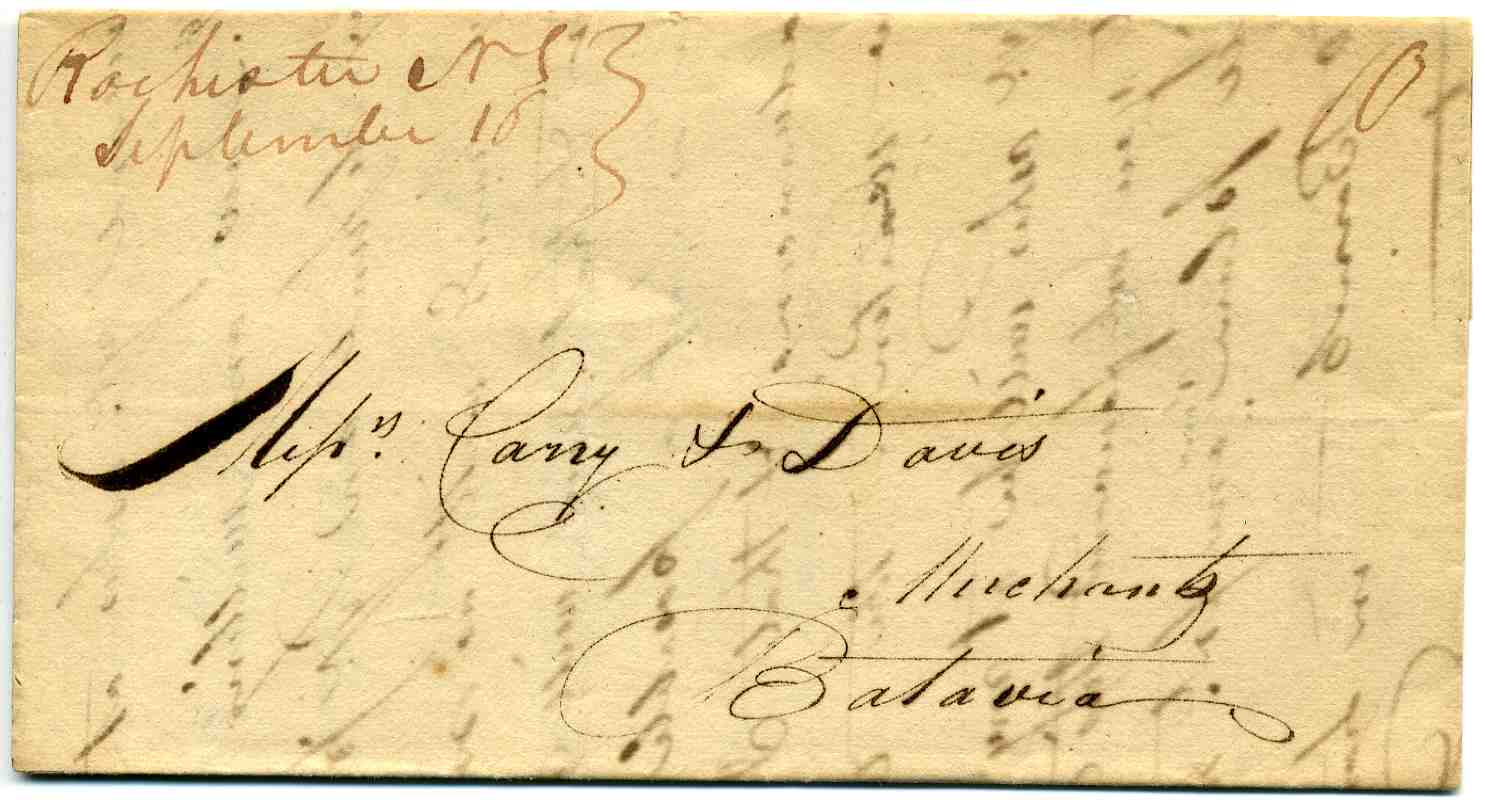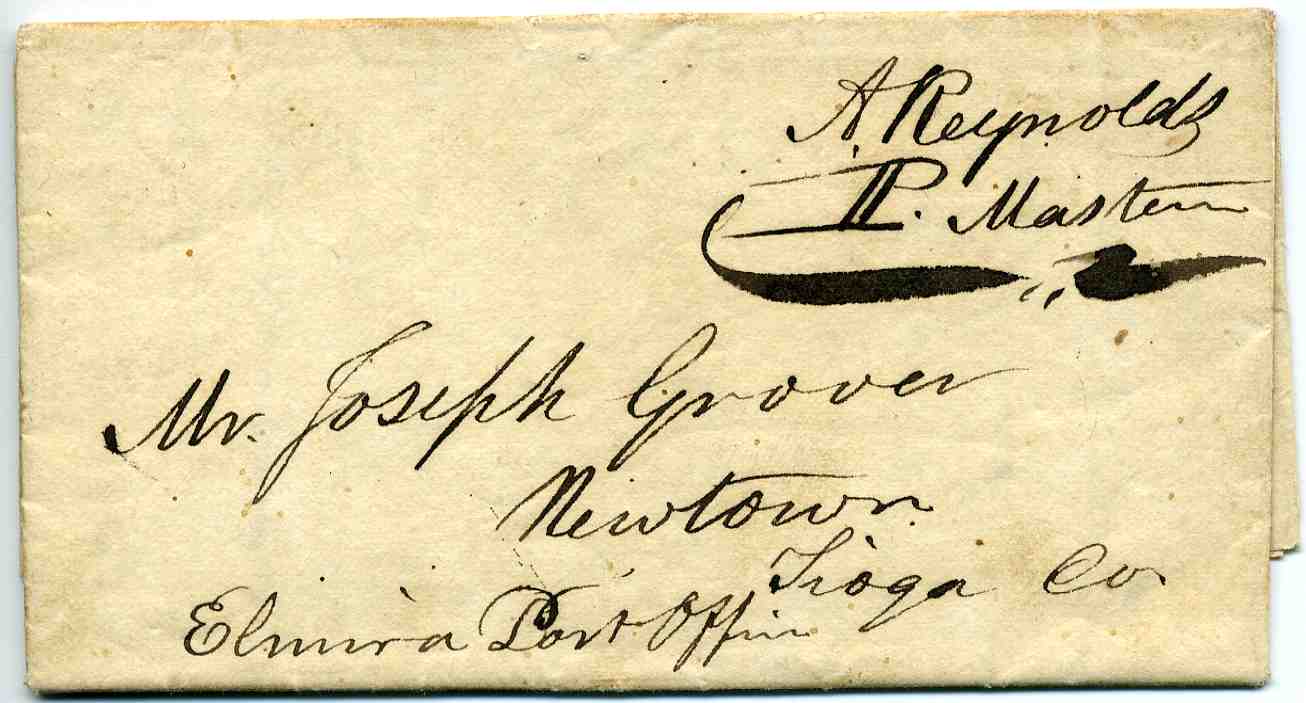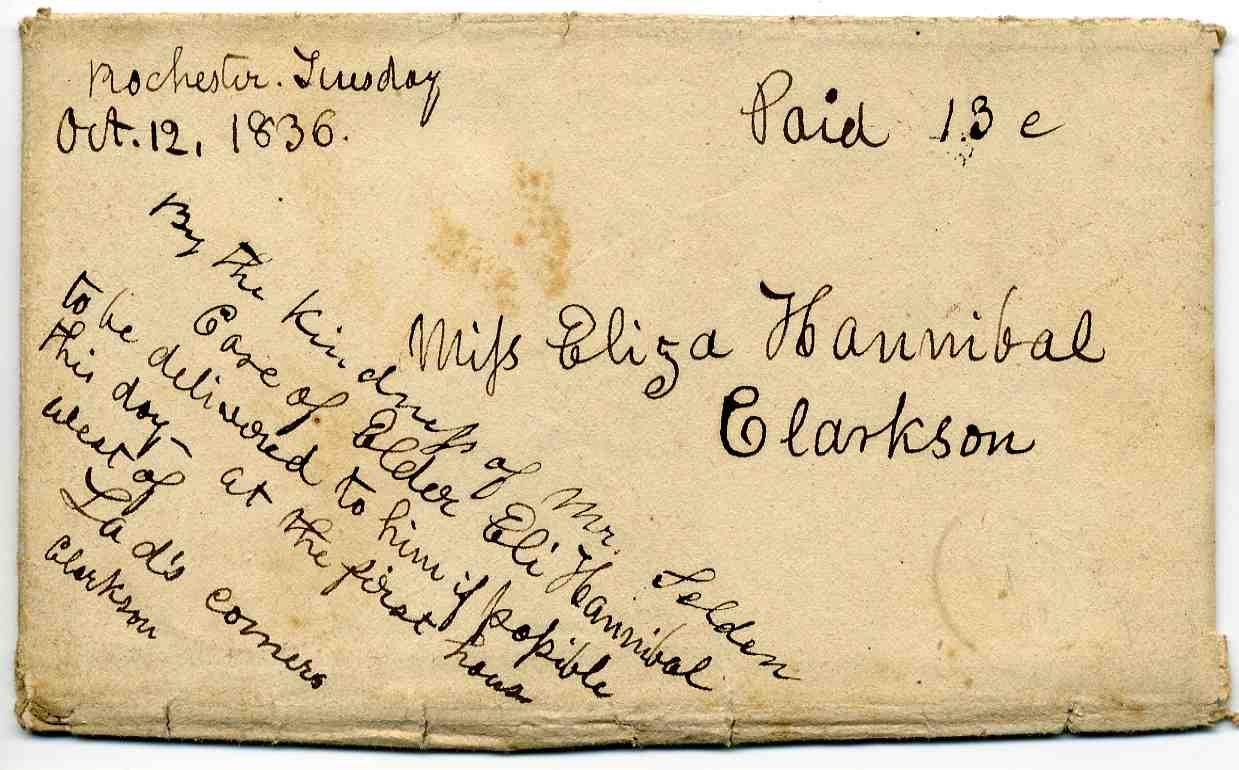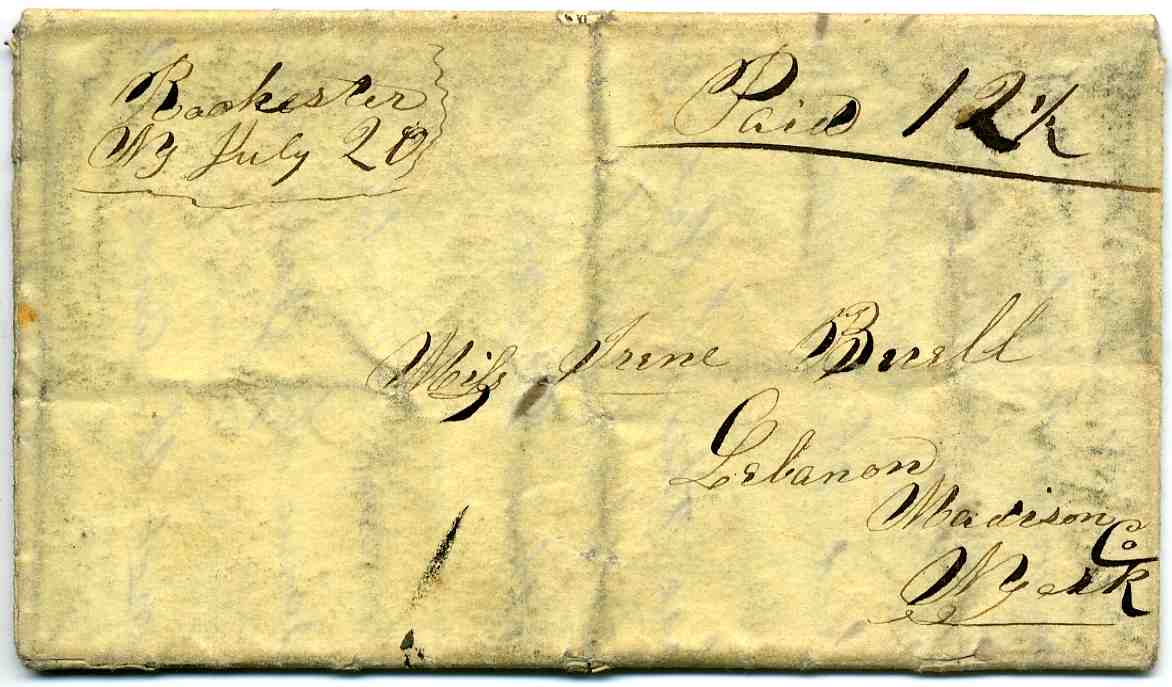

|
FOUR UNUSUAL ROCHESTER POSTMARKS by Douglas Penwell |
|
Due to economic development provided by the opportunities in the region (not limited to the Erie Canal), Rochester started using hand stamps within a few years of the establishment of its post office in 1812. Manuscripts are scarce; all the examples seen to date by this enthusiast are either very early or have some unusual feature about them. Rochester has the distinction of having more different types of pre-1830 oval hand stamps than any other NY State office. The other two offices that used oval hand stamps more frequently are Buffalo and Utica. Those two offices used ovals for longer periods. Buffalo has recorded usages from 1825 into the 1850ís. Utica used ovals from the 1840ís into the mid-1850ís. Utica probably has more surviving examples than Buffalo or Rochester, largely being due to the mail volume from that office in the period in which oval hand stamps were used. Although no formal census has been done, there are certainly over 100 surviving examples of oval markings used from Rochester between 1817 and 1830. The first circular markings came into use in the late 1820ís and are only easily found from 1832 on. Oval markings from Rochester were fashioned in many different styles; solid ovals, dotted ovals, with and without year dates, in green, black and red, spelled Rochester and Rochesterville. Red is the predominant color and ovals in the 1820ís show the increasing mail volume as this boom town grew in economic, regional and social importance. The oval markings will lend themselves easily to a future article. This writing shall concern itself with a very limited attempt to illustrate a few manuscript usages. Other large towns (comparatively large as modern understanding is of an entirely different meaning for the term) used manuscript markings frequently within a few years of the first operation of a post office. The post offices at Canandaigua and Geneva were both established before 1800. These two towns have surviving manuscript examples from between 1794 and 1820. Both had several types of hand stamps in use from 1799 onwards yet managed to use manuscript town markings in between individual periods of use for those various devices. This is not the case with Rochester. This author has yet to see a single example of an ordinary domestic use manuscript marking from the 1820ís. There are only three or four recorded before 1820. The first illustration here is a manuscript usage from 1814. Of the four pictured, it is the only one that is an ordinary domestic usage. It also has the distinction of being the earliest recorded example of a manuscript town marking from Rochester in private hands. There is an earlier example with the use of the spelling Rochester Village, but it is in an archive. |
 |
| The most frequent uses in manuscript where the postmark and the address were written by the same person are free franks, PM franking being the most abundant. The second cover illustrated is an 1828 postmaster free frank from Rochester. It is marked simply "A Reynolds / PMaster." This letter mentions stone for the Reynolds Arcade, an important building that was soon to be completed. This is also just before Abelard Reynolds was replaced as postmaster due to policies of the incoming Jackson administration. There is one other recorded PM Free franked letter from Rochester, dated 1819. |
 |
| The
third cover illustrated is highly unusual to say the least. It
originated in Rochester with a letter heading of 12 M (midnight). It was
written by abolitionist David Marks about an upcoming anti-slavery
meeting in Utica. Note the unusual address Ė "By the Kindness of
Mr. Selden / Care of Elder Eli Hannibal / to be delivered to him if
possible this day - at the first house / West of / Ladís Corners /
Clarkson"
|
 |
| This
letter was signed by Eliza Hannibal; daughter of a leading abolitionist
in Western Monroe County. Marks is asking if her wedding to John Curtiss
could be delayed in order to attend the meeting. The letter was answered
on the same sheet and a red circular hand stamp and manuscript 6 cents
collect was added at Clarkson. The CDS is dated the 12th even
though the response is headed "Clarkson 13." David Marks
writes "Please enclose this same letter & send it by the Stage
Driver to be left at Br. Curtissí HouseÖ"
This rate would be 6 cents collect both ways for 12 cents and an additional cent added for the post rider (stage driver), making the total 13 cents. The rate applied at Clarkson does not indicate prepayment. Interestingly, Mr. Selden was probably H.R. Selden, the father of George Selden who received a "Road Engine" (automobile) patent in 1895. The Rochester / Tuesday Evening notation is in the same hand as the Marks letter. This writer is puzzled about how the postage was paid, collected and how it was entered in the letter books at Rochester or Clarkson! The fourth cover subject to analysis here is a manuscript marking from 1838. This is the latest example in ESPHS manuscript tabulations and was previously recorded with only the year date. Please note that this is addressed to Lebanon in Oneida County; the postmark appears to be in the same hand as the address. How did this come to be? Did this actually pass through the mails? People re-used postage stamps from their inception, the reason for obliterators and grilled stamps. Could the sender of this letter have been trying to save postage? There is no conclusive or definitive answer. |
 |
| Rochester
manuscripts are genuinely scarce, but Monroe County is much easier than
the office of the same name from Ulster County. From 1820 to 1826, that
office operated as Rochester until the change to Accord. There currently
is one recorded example from 1824. Several other offices with similar
names (such as Waterville from Oneida and Delaware counties) operated
simultaneously. Unlike Waterville, Rochester markings with the county
name are not recorded. The cover from the Ulster County Rochester was
originally thought to have originated in Monroe County.
How many examples are recorded in manuscript from your town(s) of interest? There are post offices from which the only way to obtain a postal marking is in manuscript. This is not merely another request for data on manuscript usages (although that is always appreciated). It could be the beginning of a search that might lead you to turn up covers that you can write about! |